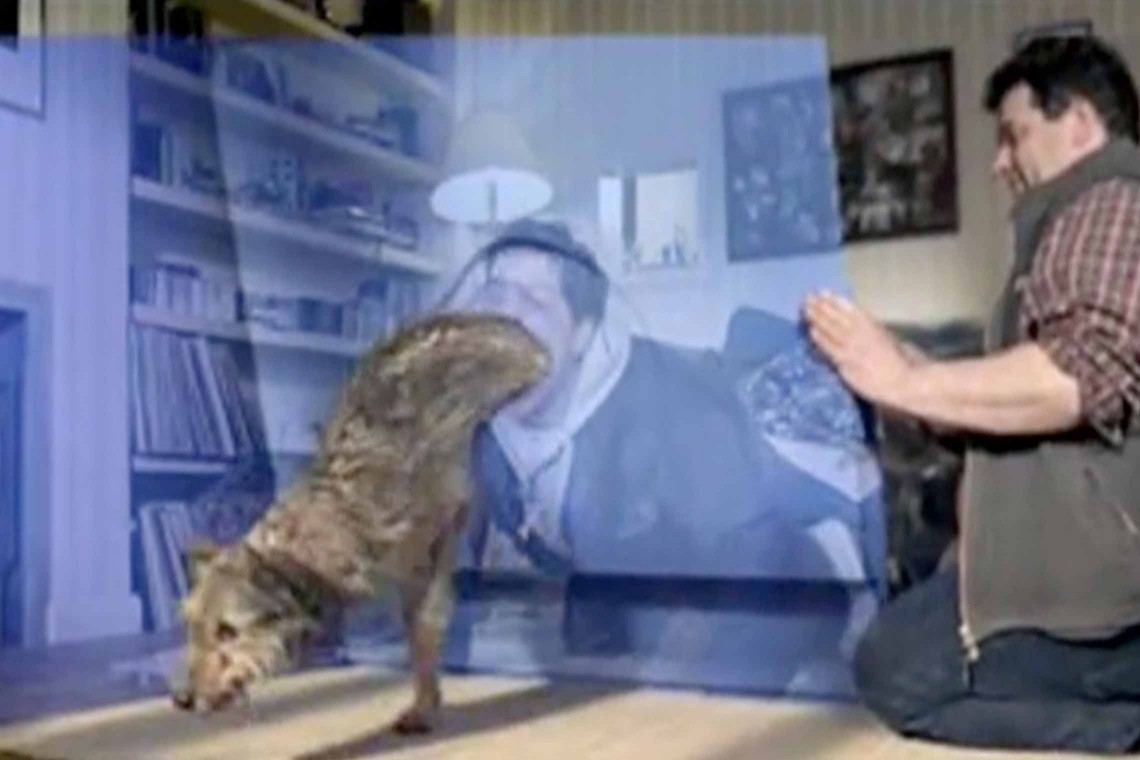The “Wrigley’s Xcite Dog Breath” Ad
A Howl of Car Crash Marketing or Just a Breath of Fresh Air?
Remember the early 2000s?
Flip phones, MySpace, and adverts so bizarre they made you question reality?
Well, here’s a blast from the past that checks all the boxes: the Wrigley’s Xcite Dog Breath advert. Yes, Dog. Breath. It’s the ad that disturbed children, baffled parents, and left the rest of us wondering: Is this brilliant marketing or another example of car crash marketing?
Note:
This article features content from the Marketing Made Clear podcast. You can listen along to this episode on Spotify:
Let’s paint a picture for those who missed out.
The scene opens with a man passed out on a couch.
He’s not just any man; he’s the quintessential post-night-out casualty, face-first in a greasy kebab. We’ve all been there, right?
The kind of night that leaves your breath smelling like a cross between a garlic farm and a dumpster. But in this ad, things take a weird twist, because why settle for subtle metaphors when you can have dog feet crawling out of a guy’s mouth?
Green screens are wonderful inventions!
Yes, dog feet. Soon, those little paws turn into a whole dog. And not just any dog—it’s gnarly, saliva-flinging, and probably in need of its own breath mint. This slobbering mutt growls and shakes itself like it just jumped out of a wet canal. And just when you think the weirdness can’t escalate, the man shakes a piece of Wrigley’s Xcite gum into his mouth, and poof! The dog vanishes. The message? “Avoid Dog Breath.”
Blllleeuuuurrgghh or Brilliant?
At first glance, this advert might seem like the work of someone who spent too much time brainstorming in a windowless room filled with Red Bull and questionable creative choices. But look closer, and you’ll see the genius, or madness, depending on your point of view.
The scene is instantly relatable for its target audience. And that is extremely important to acknowledge, because relevance is imperative in advertising…
And who among us hasn’t woken up with post-party breath that could knock out a small army? Add in the regrettable kebab inhaled during the late hours, and this situation is so real it hurts. Well, not literally hurts, unless you count the emotional trauma of remembering what you ate at 3 a.m. in a dimly lit alley.
It’s called Hangxiety isn’t it?
But back to the dog. That poor, misunderstood mutt. It’s a metaphor, of course, symbolising that foul morning breath we all know too well. While Wrigley’s could have gone with the obvious “minty fresh” approach, they instead opted for this gross-out shocker to make their point. And in a world where ads are often forgotten seconds after they air, this one sticks. Like, really sticks.
Maybe even too well.


The Problem with Extreme Mint Refreshment
Now, let’s talk about the official complaints. Parents weren’t exactly thrilled when little Timmy watched a man give birth to a snarling CGI dog from his mouth during Saturday morning cartoons. Many found the ad disturbing, particularly children who probably assumed there were now dogs hiding in their throats waiting to burst out.
Who can blame them? The CGI was so good it was almost too convincing.
The biggest issue wasn’t the content itself, but when it aired. Playing this during daytime TV was the real faux pas. Kids were bound to see it, and parents were bound to have to answer some awkward questions like, “Mom, do we have dogs inside us?” You can imagine the chaos this caused at breakfast tables across the UK. I can almost hear echoes of the collective sigh of confusion and horror over twenty years later.
Car Crash Marketing or Calculated Chaos?
So, was this a piece of car crash marketing, destined to crash and burn?
Well, it depends. If the goal of marketing is to be memorable, Wrigley’s certainly hit the nail on the head, or the dog on the muzzle.
The ad got people talking. A lot.
In fact, the complaints and controversies probably only fuelled more views, as the old saying goes, “There’s no such thing as bad press.”
But on the other hand, if you’re causing parents to file complaints faster than they can say “minty fresh,” maybe it’s time to rethink your strategy. Wrigley’s aimed for extreme, and they certainly delivered—perhaps a little too much.

The Aftermath: A Lesson in Timing
Ultimately, the Wrigley’s Xcite Dog Breath advert wasn’t a failure of creativity, it was a failure of timing. If the ad had aired during late-night TV, targeting the very audience it was meant for (tired, kebab-eating adults who understand that garlic breath can feel like an angry dog taking residence in your mouth), we might be looking at this as a classic example of genius marketing.
But since it aired during the day, it’s gone down in history as one of those “what were they thinking?” moments.
The complaints poured in, parents were outraged, and children were likely scarred for life, with nightmares of dogs erupting from their mouths.
Anecdotes from the Front Lines
One can imagine the coffee-machine conversations of the time:
“Oh my God, did you see that ad last night with the dog coming out of that guy’s mouth?” “Yeah, my kids were watching and now they’re terrified of our golden retriever!”
And who could forget the internet forum chatter?
Threads dedicated to deciphering the ad’s bizarre imagery and questioning whether anyone at Wrigley’s had lost their mind. Meanwhile, others were trying to figure out where they could get that gum because, let’s be honest, if it can tackle that level of dog breath, it must be potent.
Conclusion: Brilliant Mess or Beautiful Train Wreck?
In the end, the Wrigley’s Xcite Dog Breath ad is a perfect example of the fine line between memorable and horrifying. It wasn’t necessarily bad marketing; it just wasn’t appropriate for all audiences.
The key lesson here? Timing is everything.
If you’re going to show a man regurgitating a growling dog to demonstrate the power of your product, make sure you’re not also ruining someone’s morning cereal in the process.
But hey, at least we’re still talking about it all these years later—proof that even when marketing crashes, sometimes it still gets the job done.


